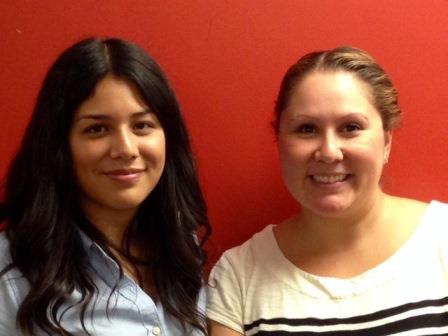You are here
 In response to the recent media coverage of unescorted children fleeing violence from countries in Central America and the fortitude they and their families demonstrated in the face of tremendous adversity, many within the Latino community have turned their attention to the ways in which these experiences affect emotional and mental health. Recently, the Center for Latino/a Mental Health at the Chicago School of Professional Psychology hosted a Latino/a Behavioral Health Conference, focusing this year’s theme around hope and resilience within the Hispanic community.
In response to the recent media coverage of unescorted children fleeing violence from countries in Central America and the fortitude they and their families demonstrated in the face of tremendous adversity, many within the Latino community have turned their attention to the ways in which these experiences affect emotional and mental health. Recently, the Center for Latino/a Mental Health at the Chicago School of Professional Psychology hosted a Latino/a Behavioral Health Conference, focusing this year’s theme around hope and resilience within the Hispanic community.
Research regarding Latinos and their mental health experiences are very limited overall. Given the diversity of groups within the Latino community, findings from studies do not always adequately convey the unique challenges experienced by particular groups or their specific needs. One of the keynote speakers at the conference, Dr. Azara Santiago-Rivera, Dean for Academic Affairs, Professor of Counseling, and Director for the National Center for Research and Practice for Latino Health at the Chicago School of Professional Psychology, aptly noted that past research has focused on the Latino family through the lens of a deficit model rather than using a strength-based approach. In particular, portraying Latino families as “dysfunctional” not only reflects a bias in favor of more mainstream cultural norms and values, but it also fails to recognize the many strengths demonstrated during times of hardship. One important strength is resilience. Family plays a vital role in developing resilience and makes it possible for Latinos to transform their sometimes traumatic experiences into sources of strength and empowerment. Among prominent cultural characteristics is the importance of family, demonstrated through commitment and emotional support especially during times of difficulty.
Spanish language and the migration experience are both common cultural links among many Latinos. Despite these similarities, it is important to stress that while common, these factors are not indicative of homogeneity in this group. Ancestry, immigrant experience based on the country of origin, and even specific regions within countries not only set the stage for the immense diversity found among Latinos, but also help to explain significant differences between them. These differences often include legal status, socioeconomic status, and educational attainment, to name a few. These factors can subsequently influence the rate at which Latinos of varying nationalities seek and use medical and mental health care services. For example, another conference presenter, Eleanor Nelson, from Trilogy Behavioral Healthcare, explained that although Mexican Americans experience mental illness in similar numbers to their white counterparts, they seek and utilize mental health services far less. The unique migration process, along with language barriers, racism, poverty, and legal status are only a few of the contributing factors that contribute to what Nelson refers to as the “compounded traumas” that can be experienced by Latinos with severe mental illness.
During such times of trauma, Latinos generally turn to their families to problem-solve and form support networks. They are more likely to rely on their families before seeking outside help. Moreover, Latino families will often seek help from within their religious communities or primary care physicians before seeking support from behavioral health agencies, including psychiatric rehabilitation agencies. It is this familial support that makes it possible for individuals with severe mental illness to live in their home communities. Once again, cultural context proves to be extremely important in providing services to this community. For instance, it is common for children, especially daughters, to live with their immediate and extended families through adulthood or until marriage. Including these cultural practices in the treatment process is important not only for providing appropriate care, but maintaining familial and community connectedness as well.
Although there is awareness in the medical and mental health fields of the need for cultural and linguistic competence, efforts continue to fall short for meeting the needs of the Latino community and many others. As noted earlier, language is one of many barriers that interferes with the rate at which Latinos look for and use mental health services. Further, in addition to translation of materials into the appropriate languages and having available translators or bilingual staff to enhance linguistic and cultural competence, family members also are a key component to engaging in treatment and promote recovery. However, these do not replace the importance of having mental health care professionals that are bicultural as well as bilingual. Bilingual and bicultural professionals connect and understand Latinos in ways that professionals without this background may not. This can be said not only for Latinos, but other racial and ethnic minorities as well. Latinos are not alone in their need for their culture and language to be met with sensitivity and understanding. Issues like stigma, prejudice, poverty, and many others, resonate across cultures.



